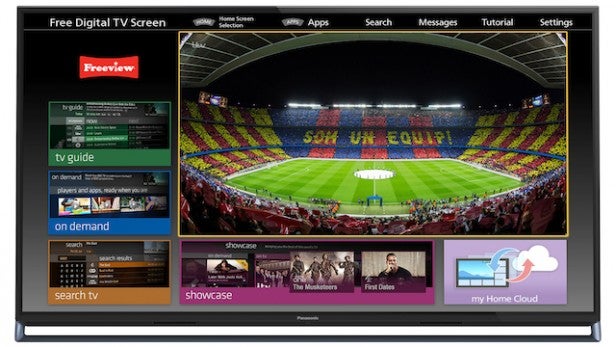Panasonic TX-50AX802 Review
Panasonic TX-50AX802
A stunning 4K TV that gives Panasonic a seat at the top 4K table alongside Samsung and Sony
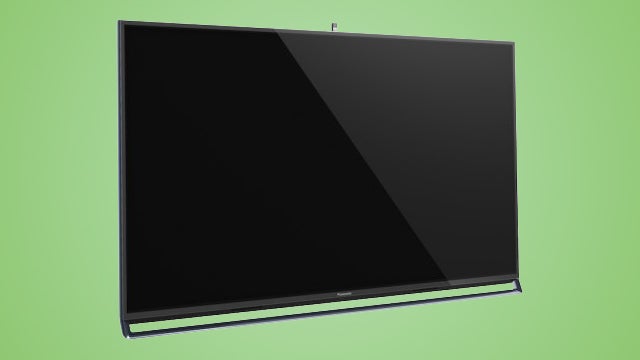
Sections
- Page 1 Panasonic TX-50AX802 Review
- Page 2 Picture Quality Review
- Page 3 3D, Sound and Conclusions Review
Verdict
Pros
- Spectacular picture quality
- Outstanding smart TV features
- Attractive lean-back design
Cons
- Limited viewing angle
- Picture set up needs care
Key Specifications
- Review Price: £2059.00
- 50-inch LCD TV with edge LED lighting
- native 4K/UHD resolution
- Active 3D playback (2 prs of glasses included)
- TV Anywhere remote viewing feature
- Freetime catch up TV system built-in
What is the Panasonic TX-50AX802?
The 50-inch Panasonic TX-50AX802 is a big deal. That’s because it’s the first of Panasonic’s second-generation 4K LCD TVs, following 2013’s 65WT600. As well as continuing to sport cutting edge 4K connectivity and features (including, eventually, Netflix 4K support via a firmware update), it promises a much-improved panel design and picture technology.
Panasonic TX-50AX802: Design and Features
Panasonic is, it seems, keen to put its plasma past well and truly behind it. So much so that at this January’s Consumer Electronics Show in Las Vegas it boldly declared it would make LCD TVs this year so good they’d perform at least as well as the brand’s plasma TVs.
The TX-50AX802 isn’t quite the flagship model in Panasonic’s 2014 range – that’s not coming until the latter stages of the year. But with its native 4K resolution and Studio Master Colour panel technology, it’s certainly one of the sets we’ll be hoping can live up to those lofty CES claims.
If you could judge quality by weight in the AV world, then the 50AX802 would be the best 50-inch TV ever. The combination of an unusually heavy panel and an incredibly weighty stand make it almost impossible to move the thing around once you’ve set it up without dismantling it again.
Thankfully its heftiness doesn’t stop it from being a very attractive TV indeed. The glossy, ultra well-built black bezel sits cutely atop a slightly forward-angled chrome-finished open rectangle that extends from the bottom edge, and the design of that heavy-duty stand enables the TV to angle back slightly to give you a TV that looks more like a king-sized photo frame than a typical room-dominating big-screen TV.
Connectivity is excellent. Or at least it looks that way initially… For starters there are four HDMIs rather than the three Panasonic generally provides on its more affordable TVs. There’s also a DisplayPort in recognition of the fact that this digital connection supports high-quality 4K playback as well as the new HDMI 2.0 standard.
Multimedia duties are catered for by three USBs (for either recording tuner stuff to USB HDDs or playing back multimedia files of the vast majority of types from USB storage drives); an SD card slot in recognition of how many cameras, camcorders, smart devices and music players now use this type of storage; plus both LAN and integrated Wi-Fi network options for both DLNA streaming and accessing Panasonic’s online services.
It’s great, too, to find the Panasonic TX-50AX802 supporting twin Freesat and twin Freeview tuners – something that opens up some great smart features such as being able to watch one channel on the TV and another on a portable Smart device.
Deeper exploration of the Panasonic TX-50AX802’s connections, though, uncovers a couple of unexpected limitations. First, only one of the HDMIs – number 4 – is capable of receiving 4K. This might not seem a problem right now when 4K sources are more or less non-existent, but it could become an issue in the future – unless you can use the DisplayPort for one of your potential future 4K sources.
SEE ALSO: Best 4K TVs Round-up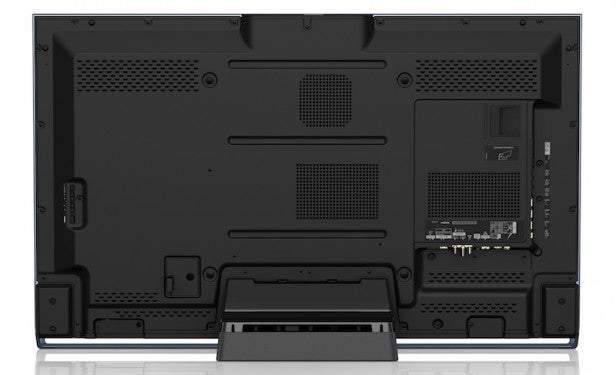
When we first published our test of the 50AX802, its 4K chipset couldn’t handle Netflix’s 4K streams, despite the TV carrying an in-built HEVC decoder. We were told then that Netflix 4K would never work on the 50AX802, but happily this has proved to be incorrect. For Panasonic announced at the 2014 IFA technology show that Netflix 4K can now be enabled on the 50AX802 via a firmware update.
Given that Netflix represents at the time of writing pretty much all the readily available high profile 4K content there is, it’s hugely important that the Panasonic TX-50AX802 supports it. Especially as the Sony and Samsung 2014 4K TVs do.
Pretty much every other aspect of the Panasonic TX-50AX802’s specification sheet is on the money, too. Its edge LED lighting, for instance, is driven by a sophisticated local dimming system, while its 4K pictures benefit from Panasonic’s most powerful Hexa 4K video processing engine yet.
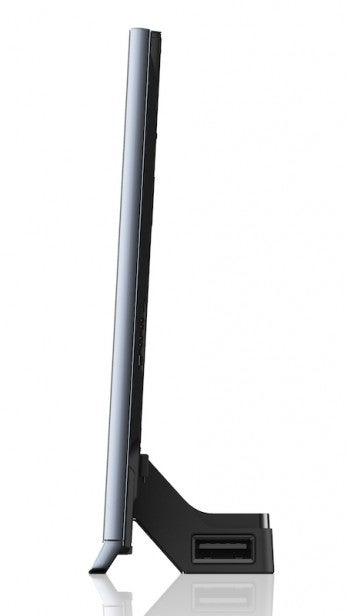 Also highly significant is the 50AX802’s Studio Master Colour technology. This uses new high colour space LED backlights to deliver an enhanced colour range that should combine a wider palette with more blend and skin tone finesse.
Also highly significant is the 50AX802’s Studio Master Colour technology. This uses new high colour space LED backlights to deliver an enhanced colour range that should combine a wider palette with more blend and skin tone finesse.
Particularly promisingly in terms of trying to rival the performance of Panasonic’s plasma TVs, the Studio Master Colour backlight technology is claimed to help the Panasonic TX-50AX802 reproduce colours more accurately at low saturation and brightness levels – something normal LCD TVs find notoriously difficult.
The high-end picture quality story doesn’t end there, either. For as well as claiming a huge 2000Hz-like effect with its native refresh rate/scanning backlight/frame interpolation combo, the 50AX802 carries what Panasonic calls the Studio Master Drive. This actually comprises two new innovations to boost picture quality.
First there’s the Super Chroma Driver, which applies a 3D colour management system to the wide-colour-gamut panel drive. Second there’s the Black Gradation Drive, which as its name suggests applies brightness compensation to low-brightness image elements to deliver enhanced colour gradations and shadow detailing during dark scenes.
This is all very promising indeed, and raises hopes that Panasonic’s claims to be able to get LCD pictures up there with plasma really might be more than hot marketing air.
If it’s third-party ‘endorsements’ you’re after, the Panasonic TX-50AX802 comes sporting certification by the independent THX quality assurance group, and the endorsement of the Imaging Science Foundation. Two THX presets come with the THX certification, while there are two ISF preset slots an ISF engineer could use to store night and day settings as part of a professional calibration.
The ISF backing is a result of the huge quantity of calibration tools the 50AX802 supports. It would take too long to go into everything you can tweak on the set, but highlights include fulsome colour and white balance management systems, separate Native/REC. 709/SMPTE-C/EBU colour gamut settings, and various gamma presets. Along with the facility to fine tune gamma around those core presets.
Basically the 50AX802 offers much the same sort of picture flexibility that Panasonic’s plasma TVs used to…
We haven’t yet covered the 50AX802’s smart features – and actually we’re not going to in much depth, as this will be done in an imminent separate feature. However, we should point out the highlights here, kicking off with TV Anywhere. This brilliant innovation lets you stream programming from your TV’s tuners or recordings on inserted USB storage devices over the Internet to any smart devices you’ve registered with the TV. And it works even if you’re abroad.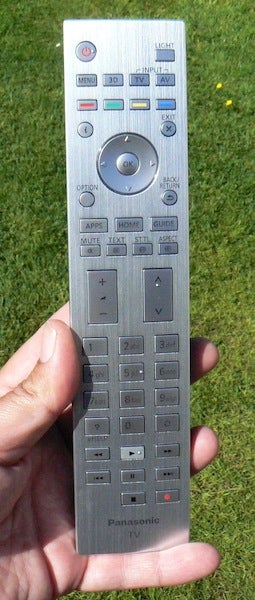
My Stream, meanwhile, uses an attractive scrolling list of image ‘tiles’ to aggregate online and tuner content it thinks you’ll be interested in.
A new Info Bar screen is on hand to pop up and provide some basic ‘life’ information when ever a sensor in the TV detects you’ve entered the room. Plus you and other household members can set up your own personalised content home screens via Panasonic’s My Home Screen system; and rather brilliantly you can access all the main free UK broadcaster’s catchup TV services via an integrated Freetime 7-day backwards EPG.
One other significant feature to mention is that the Panasonic TX-50AX802 supports the active 3D system (with two pairs of 3D glasses included free). This matters because it indicates that Panasonic’s 4K TV uses a VA style panel, not an IPS one. Which means, based on past experiences, that it won’t support such a wide viewing angle as IPS panels, but will likely provide a better contrast performance.
Panasonic TX-50AX802: Set Up
As noted in the previous section, the 50AX802 certainly isn’t short of picture set up tools. And actually, our experience found that some of them need some quite careful attention to get the best results.
For starters we’d recommend keeping the backlight setting on the Panasonic TX-50AX802 reasonably reined in – to somewhere between its 55 and 65 setting. This greatly enhances the depth and evenness of black levels. We’d also suggest setting the contrast to around its 80 level, to reduce noise without making images lose their punch.
When watching 4K or good quality HD, you should also make sure the TV’s noise reduction systems are switched off. To get the most immersive contrast performance, we’d recommend using the Adaptive Backlight Control feature on its Mid level, as black levels look unconvincing at any lower setting, while the highest setting tends to reduce shadow detail too much.
Another feature we’d strongly recommend you activate is the Letterbox Dimmer, which treats the LED lighting in the areas of the picture associated with the black bars above and below 2.35/2.4:1 aspect ratio presentations separately, so you can leave the bars looking nice and uniformly dark even while the ‘Brilliance Enhancer local dimming system goes about maximising the contrast of the rest of the image. The Brilliance Enhancer seemed to give the best results when set to its Minimum level, as its workings became too obvious with the higher settings – even though these higher settings did deliver the most punchy images.
How we test televisions
We test every TV we review thoroughly over an extended period of time. We use industry standard tests to compare features properly. We’ll always tell you what we find. We never, ever, accept money to review a product.

